National AIDS Treatment Information Project

Viral Load Testing
- What does viral load mean?
- What is viral load testing?
- How is viral load testing helpful?
- What do the results of a viral load test mean?
- How is viral load testing used in managing HIV disease?
- When and how often should viral load testing be performed?
Viral load (or viral burden) refers to a measurement of the number of HIV particles. The total viral load is the amount of HIV in your blood, lymph nodes, spleen, and other parts of your body. If your viral load measurement is high, it indicates that HIV is reproducing and that the disease will likely progress faster than if your viral load is low.
Viral load testing measures the number of HIV particles in your blood. These tests detect a kind of protein strand called RNA, which is a part of HIV containing the genes of the virus. Each HIV particle contains two copies of a molecule called RNA that carries the HIV genes. The viral load test determines the number of copies of HIV RNA molecules in a sample of blood.
There are three laboratory techniques that have been developed for viral load testing: quantitative polymerase chain reaction (PCR), branched-chain DNA (bDNA), and nucleic acid sequence-based amplification (NASBA). While the viral load test actually measures only the level of virus circulating in your blood, there is evidence that this value is a good indicator of the amount of virus in your entire body.
How is viral load testing helpful?
Your viral load test result provides important information that is used in conjunction with your CD4 cell (“T-cell”) count to monitor the status of HIV disease, to guide recommendations for therapy, and to predict its future course. While the CD4 count is a marker of the health of your immune system (high value is better), viral load testing directly measures the number of HIV particles circulating in your blood (low value is better). There is good evidence that keeping the viral load titer “as low as possible for as long as possible” will decrease the likelihood of developing complications of HIV disease and will prolong life.
What do the results of a viral load test mean?
Viral load tests are reported as the number of HIV “copies” in a milliliter of blood. Results can generally be classified as high, low, and intermediate. General guidelines for understanding the results follow:
- High viral load: greater than 5,000 to 10,000 (five thousand toten thousand) copies. This result indicates a higher risk for HIVdisease progression. High viral load titers may range as high asone million copies or more.
- Low viral load:
less than 200 to 500 (two hundred to fivehundred) copies depending upon assay used. This result indicatesthat HIV is not actively replicating and that the risk of diseaseprogression is low. It is important to realize that an”undetectable” test result does not mean that HIV infection iscured. Rather it indicates that the level of virus in the blood islower than the test can measure.
Viral load titer results between these values (less than 5,000 to10,000 but greater than 200 to 500) are considered intermediate.
How is viral load testing used in managing HIV disease?
Doctors and researchers are still trying to determine how viral load testing should be best used for patient care. Most believe that viral load tests can be used to determine when to begin antiretroviral (anti-HIV) therapy and whether the drugs you are receiving are effective. In general, antiretroviral therapy is recommended in persons with high viral load titers regardless of their CD4 count results or whether they have any symptoms. In persons with intermediate viral load titers, either starting drug therapy or monitoring them off therapy may be reasonable options. If well tolerated, antiretroviral drugs are continued as long as they suppress the viral load titer.
When and how often should viral load testing be performed?
Recommendations about how to use viral load testing probably will change as researchers learn more about the test and doctors gain more experience with it. The following are general guidelines:
BaselineInitially it is a good idea to have two viral load tests performed at separate visits. This will give a reliable measure of the baseline HIV level. If your viral load is low and CD4 count is normal, your doctor may not recommend antiretroviral therapy. If your viral load is high, your doctor will recommend that you start antiretroviral therapy.
Evaluating therapyTo determine if antiretroviral therapy is effective, you should have a viral load test performed along with a CD4 count about four weeks after starting it. In general, effective therapy should result in a significant drop in your viral load titer over this time period. This is defined as at least a factor of three-fold (for example from 10,000 to less than 3,000). Your doctor will review the results with you and discuss the significance of the change in viral load titer.
Monitoring therapyYou should have a viral load test along with a CD4 count performed every three to four months to confirm that the antiretroviral drugs you are receiving continue to keep your viral level low. To provide accurate comparisons, your doctor will send all the viral load tests to the same laboratory and have your blood samples analyzed by the identical technique. In general, viral load testing should not be performed during a new illness or soon after a vaccination, as both of these may temporarily affect the results.



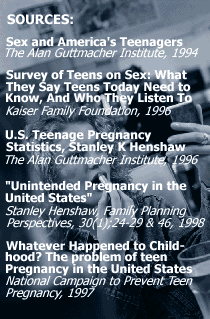 When are teens most likely to get pregnant? Pregnancy risk is high right from the beginning of sexual activity: half of all first teen pregnancies occur in the first six months after sexual activity begins.
When are teens most likely to get pregnant? Pregnancy risk is high right from the beginning of sexual activity: half of all first teen pregnancies occur in the first six months after sexual activity begins. 
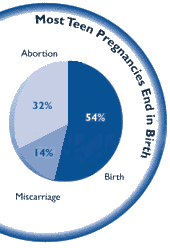
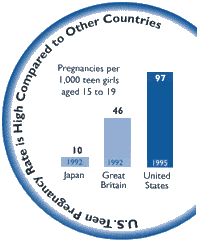

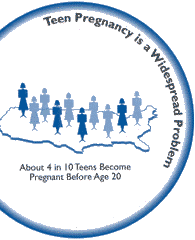 How widespread is teen pregnancy in the U.S.? More than four in 10 young women become pregnant at least once before they reach the age of 20 – nearly one million a year.
How widespread is teen pregnancy in the U.S.? More than four in 10 young women become pregnant at least once before they reach the age of 20 – nearly one million a year. 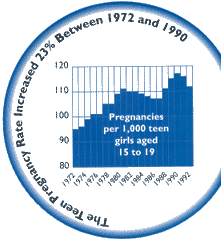 Are more teens getting pregnant today than two or three decades ago? The pregnancy rate among all teen girls aged 15-19 rose 23 percent between 1972 and 1990, and then fell slightly in 1992. This increase occurred because of a rise in the proportion of teenagers who have had sexual intercourse. During the same time, the pregnancy rate among sexually experienced teen girls decreased 19 percent, largely due to the fact that many more teens use contraception today than did in the past. Most (71%) sexually active teens use contraception.
Are more teens getting pregnant today than two or three decades ago? The pregnancy rate among all teen girls aged 15-19 rose 23 percent between 1972 and 1990, and then fell slightly in 1992. This increase occurred because of a rise in the proportion of teenagers who have had sexual intercourse. During the same time, the pregnancy rate among sexually experienced teen girls decreased 19 percent, largely due to the fact that many more teens use contraception today than did in the past. Most (71%) sexually active teens use contraception.